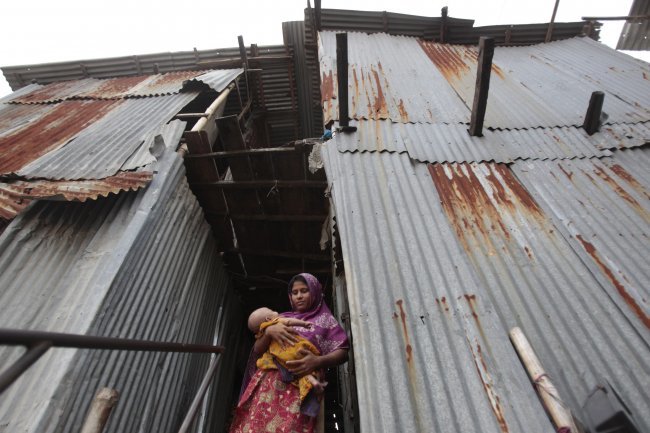
REUTERS/Andrew Biraj
Rabeya holds her one-month old daughter Sumaiya in front of her slum house at Hatirjheel in Dhaka July 28, 2012. Rabeya works in a garment factory as a helper. She earns 3,000 Tk ($37.50) per month. According to Rabeya, she cannot save or send money to her parents as she has to pay all of her earnings to the land lord and to buy food.
The death toll in April’s Bangladesh garment factory collapse has now soared past 1,000. It’s been called the worst industrial disaster in the country’s history.
But it’s hardly the first.
These disasters are becoming more common as infrastructure ages.
Meanwhile, working conditions and pay for the Bangladeshis who work in these clothing factories are hardly ideal.
Bangladesh has become the world’s second-largest clothing exporter, in part because companies have moved production there to take advantage of shockingly low wages and the lightest regulations in the world.
Many U.S. and European retailers import clothing from Bangladesh, including popular brands such as HM and Benetton.
The low prices we pay for these clothes are tied directly to the low wages and working conditions of the Bangladeshis who make them.
Article source: SAI http://feedproxy.google.com/~r/typepad/alleyinsider/silicon_alley_insider/~3/KY85-2NMbtE/bangladesh-garment-workers-2013-5